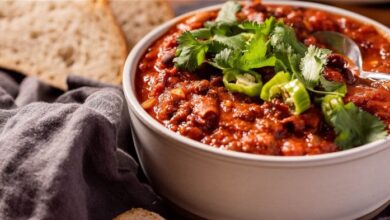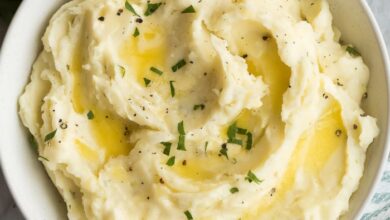
Lemon Pepper Fried Chicken: A Crispy, Flavorful Delight
Lemon pepper fried chicken, a culinary masterpiece that tantalizes taste buds with its crispy exterior and juicy, flavorful interior, has captured hearts and stomachs around the world. This dish, a harmonious blend of zesty lemon, spicy pepper, and the satisfying crunch of fried chicken, has a rich history and a fascinating evolution.
From its humble beginnings to its current status as a beloved comfort food, lemon pepper fried chicken has a story to tell, one that intertwines cultural influences, culinary creativity, and a shared love for deliciousness.
The magic of lemon pepper fried chicken lies in its simplicity. A few key ingredients, expertly combined and cooked to perfection, result in a dish that is both satisfying and irresistible. The tangy lemon and the fiery pepper create a dynamic flavor profile that is both refreshing and invigorating, while the crispy fried coating provides a delightful textural contrast.
Whether enjoyed as a main course, a snack, or a side dish, lemon pepper fried chicken is a culinary experience that is sure to leave a lasting impression.
History and Origin
The origins of lemon pepper fried chicken, a beloved dish known for its zesty and flavorful coating, are a bit of a culinary mystery. While its exact invention remains shrouded in speculation, its roots can be traced back to the rich history of fried chicken and the use of lemon pepper seasoning in various cuisines.While the precise origins are debated, the combination of fried chicken and lemon pepper seasoning likely arose from the merging of different culinary traditions.
Fried chicken, a staple in American cuisine, has its roots in West African cooking techniques, where meat was often fried in oil. Meanwhile, lemon pepper seasoning, a blend of black pepper and lemon zest, has been used in various cultures for centuries, including in West African, Caribbean, and Mediterranean cuisines.
Culinary Influences
The use of lemon pepper seasoning on fried chicken likely emerged as a result of the cultural exchange and fusion that took place in the United States, particularly in the Southern and Caribbean regions. The popularity of lemon pepper fried chicken soared in the 1980s and 1990s, becoming a staple in many households and restaurants.
The dish’s versatility and unique flavor profile made it a hit among food enthusiasts, and it has since become a beloved culinary icon.
Possible Origins
The exact origin of lemon pepper fried chicken remains a mystery, but several theories exist:
- One theory suggests that the dish originated in the Southern United States, where fried chicken was already a popular dish. The addition of lemon pepper seasoning may have been inspired by the use of lemon juice and black pepper in other Southern dishes.
- Another theory posits that lemon pepper fried chicken originated in the Caribbean, where lemon pepper seasoning is commonly used in various dishes. This theory is supported by the fact that many Caribbean immigrants brought their culinary traditions to the United States, where they influenced American cuisine.
While the exact origins of lemon pepper fried chicken may never be definitively established, its popularity and enduring appeal are a testament to its deliciousness and the power of culinary fusion.
Ingredients and Preparation: Lemon Pepper Fried Chicken

The magic of lemon pepper fried chicken lies in the perfect balance of flavors and textures. This recipe involves a few essential ingredients and a straightforward preparation process, making it a culinary adventure that anyone can master.
Essential Ingredients
The essential ingredients for lemon pepper fried chicken include:
- Chicken Pieces:Choose your favorite cuts, such as drumsticks, thighs, or wings. Bone-in or boneless options are both suitable, each offering unique textures and flavors.
- Lemon Pepper Seasoning:This is the star of the show, adding a vibrant citrusy kick and a peppery zing. A blend of black pepper, lemon zest, and sometimes other herbs like garlic powder, onion powder, and paprika creates the signature flavor.
- Flour:All-purpose flour is the standard choice for creating a crispy coating. You can also use a combination of flour and cornstarch for an extra-crisp crust.
- Eggs:Eggs act as a binder, helping the flour coating adhere to the chicken.
- Milk or Buttermilk:This adds moisture to the chicken and helps create a tender texture.
- Vegetable Oil:The oil used for frying should be neutral in flavor and have a high smoke point, such as vegetable oil or canola oil.
- Salt and Black Pepper:Seasoning the chicken with salt and black pepper enhances its natural flavors.
Chicken Preparation Methods
Preparing the chicken is crucial for achieving a juicy and flavorful result. Two common methods include:
- Brining:Brining involves soaking the chicken in a salt solution for a specific period. This process helps retain moisture and tenderize the meat, resulting in a juicier final product.
- Marinating:Marinating involves submerging the chicken in a flavorful liquid mixture, such as lemon juice, herbs, and spices. The marinade penetrates the meat, imparting its flavor and enhancing the chicken’s tenderness.
Role of Lemon Pepper Seasoning
Lemon pepper seasoning is the heart and soul of this dish. It creates a unique flavor profile that combines the bright acidity of lemon with the heat of black pepper. The seasoning adds a depth of flavor that complements the chicken’s natural taste, resulting in a dish that is both satisfying and refreshing.
Cooking Techniques

The art of frying chicken, especially when it comes to achieving that perfect crispy exterior and juicy interior, lies in mastering the right cooking techniques. This involves understanding the nuances of different frying methods and their impact on the final product.
Lemon pepper fried chicken is a classic for a reason – that crispy, tangy coating is irresistible. But sometimes, I crave something a little more nuanced, a flavor that lingers on the palate. That’s when I turn to the delicate, savory goodness of soy eggs shoyu tamago.
The rich, umami flavor of the soy sauce infused into the egg yolks is a perfect counterpoint to the zesty bite of the lemon pepper chicken, creating a truly unforgettable culinary experience.
Deep Frying vs. Pan Frying
Deep frying and pan frying are two common methods for cooking chicken. Deep frying involves submerging the chicken in a large volume of hot oil, while pan frying utilizes a smaller amount of oil and cooks the chicken in a skillet.
- Deep Frying: This method offers even heat distribution, leading to crispy skin and a consistently cooked interior. The large volume of hot oil ensures the chicken cooks quickly and efficiently. However, deep frying requires a large pot and a significant amount of oil, making it less suitable for smaller kitchens or those who prefer a lighter cooking approach.
- Pan Frying: Pan frying offers a more controlled approach, allowing for better browning and crisping of the chicken. It uses less oil and is a more convenient option for smaller batches. However, pan frying may require more frequent flipping and attention to ensure even cooking, and the chicken might not achieve the same level of crispness as deep-fried chicken.
Lemon pepper fried chicken is a classic for a reason – crispy, flavorful, and always satisfying. But sometimes, you want something a little sweeter to complement that savory goodness. That’s where candied sweet potatoes with maple syrup come in. The sweet and sticky glaze perfectly balances the spicy kick of the chicken, creating a truly irresistible meal.
Step-by-Step Guide for Preparing Lemon Pepper Fried Chicken
This step-by-step guide Artikels the process of preparing delicious lemon pepper fried chicken, using a deep frying method.
- Marinate the Chicken: Begin by marinating the chicken pieces in a mixture of lemon juice, lemon zest, black pepper, and salt. This allows the flavors to penetrate the chicken and adds a tangy, peppery taste. Allow the chicken to marinate for at least 30 minutes, or up to a few hours for maximum flavor.
- Dredge the Chicken: Once the chicken has marinated, dredge it in seasoned flour. This step creates a crispy coating that helps lock in moisture and adds a satisfying crunch. The flour mixture should contain a blend of all-purpose flour, salt, pepper, garlic powder, and paprika.
- Heat the Oil: Heat the oil in a deep fryer or a large pot to the appropriate temperature. The oil should be hot enough to create a crispy crust without burning the chicken. A good temperature range is between 350°F (175°C) and 375°F (190°C).
Use a thermometer to ensure accurate temperature readings.
- Fry the Chicken: Carefully place the chicken pieces into the hot oil, making sure not to overcrowd the pot. Fry the chicken for about 8-10 minutes on each side, or until it reaches an internal temperature of 165°F (74°C). The chicken should be golden brown and crispy on the outside.
Lemon pepper fried chicken is a classic for a reason – that crispy, tangy, and spicy flavor is just irresistible. But if you’re looking for a side dish that’s equally delicious and a bit more unique, I highly recommend checking out best fried green tomatoes.
The combination of sweet and savory flavors, plus the satisfyingly crunchy texture, makes them a perfect complement to any fried chicken dish. So next time you’re craving some fried goodness, don’t forget to add a side of these tasty tomatoes to your plate.
- Rest and Serve: Once the chicken is cooked, remove it from the oil and place it on a wire rack to drain excess oil. Allow the chicken to rest for a few minutes before serving. This helps the chicken retain its juiciness and allows the flavors to meld.
Serve the lemon pepper fried chicken hot, accompanied by your favorite sides.
Achieving Crispy Skin and Juicy Meat
The key to achieving crispy skin and juicy meat lies in maintaining the right cooking temperature and time.
Cooking Temperature: The oil should be hot enough to create a crispy crust without burning the chicken. A temperature range between 350°F (175°C) and 375°F (190°C) is ideal.
Cooking Time: The cooking time will vary depending on the size and thickness of the chicken pieces. However, a general guideline is to fry the chicken for about 8-10 minutes on each side, or until it reaches an internal temperature of 165°F (74°C).
- Avoiding Overcrowding: Ensure the chicken pieces are not overcrowded in the oil. Overcrowding can lower the oil temperature, resulting in soggy chicken. Fry the chicken in batches if necessary.
- Monitoring Internal Temperature: Use a meat thermometer to check the internal temperature of the chicken. This ensures that the chicken is cooked through and safe to eat.
Variations and Adaptations

Lemon pepper fried chicken, a culinary delight with its zesty flavor and crispy texture, has become a staple in many kitchens. This versatile dish lends itself to numerous variations, allowing you to experiment with different flavors and create your own unique culinary masterpieces.
Common Variations
There are many ways to adapt lemon pepper fried chicken, each adding its own unique twist to the classic recipe. These variations typically involve adjustments to the seasoning blend, the breading, or the cooking method.
- Spiced Variations:Adding spices like paprika, cayenne pepper, garlic powder, onion powder, or even a touch of chili powder can enhance the flavor profile of the chicken. For a smoky flavor, smoked paprika or chipotle powder can be incorporated.
- Herbed Variations:Fresh herbs like thyme, rosemary, oregano, or parsley can be added to the seasoning blend or used as a garnish. These herbs add a fresh and aromatic dimension to the dish.
- Citrus Variations:Instead of just lemon pepper, you can experiment with other citrus fruits like orange, lime, or grapefruit. This adds a different citrusy note to the chicken.
- Breading Variations:The breading can be modified by using different types of flour, like almond flour for a gluten-free option, or adding breadcrumbs or cornflakes for a crunchier texture.
- Sauce Variations:A variety of sauces can be served alongside the chicken, such as honey mustard, ranch dressing, or a spicy sriracha mayo. These sauces provide a contrasting flavor and add another layer of complexity to the dish.
Variations Table, Lemon pepper fried chicken
Here is a table showcasing some common variations of lemon pepper fried chicken, highlighting the key ingredients and accompaniments:
| Variation | Spice Blend | Breading | Accompaniments |
|---|---|---|---|
| Classic Lemon Pepper | Lemon pepper seasoning, salt, black pepper | All-purpose flour, cornstarch | French fries, coleslaw |
| Spicy Lemon Pepper | Lemon pepper seasoning, cayenne pepper, paprika | All-purpose flour, cornmeal | Spicy ranch dressing, baked beans |
| Garlic Herb Lemon Pepper | Lemon pepper seasoning, garlic powder, onion powder, thyme, rosemary | All-purpose flour, breadcrumbs | Mashed potatoes, green beans |
| Citrus Lemon Pepper | Lemon pepper seasoning, orange zest, lime zest | All-purpose flour, panko breadcrumbs | Citrus salad, rice pilaf |
Unique Lemon Pepper Fried Chicken Variation
Honey Garlic Lemon Pepper Fried Chicken
This variation combines the zesty flavor of lemon pepper with the sweetness of honey and the savory richness of garlic. Ingredients:* 1 pound boneless, skinless chicken thighs
- 1/2 cup all-purpose flour
- 1/4 cup cornstarch
- 1 teaspoon lemon pepper seasoning
- 1/2 teaspoon garlic powder
- 1/4 teaspoon onion powder
- 1/4 cup honey
- 2 tablespoons soy sauce
- 1 tablespoon olive oil
Instructions:
- In a shallow bowl, whisk together the flour, cornstarch, lemon pepper seasoning, garlic powder, and onion powder.
- In a separate bowl, whisk together the honey, soy sauce, and olive oil.
- Dip each chicken thigh in the honey-soy mixture, then dredge in the flour mixture, ensuring it’s fully coated.
- Heat the olive oil in a large skillet over medium-high heat.
- Carefully place the chicken thighs in the hot oil, ensuring not to overcrowd the skillet.
- Cook for about 5-7 minutes per side, or until golden brown and cooked through.
- Remove the chicken from the skillet and serve immediately.
This recipe combines the zesty flavor of lemon pepper with the sweetness of honey and the savory richness of garlic, creating a truly unique and delicious dish.
Cultural Significance
Lemon pepper fried chicken, while seemingly a simple dish, has woven itself into the fabric of various cultures, becoming a symbol of comfort, celebration, and shared experiences. Its popularity transcends geographical boundaries, making it a beloved food in homes, restaurants, and social gatherings across the globe.
Role in Social Gatherings and Events
Lemon pepper fried chicken’s versatility and crowd-pleasing nature make it a staple at countless social events.
- Family gatherings: From Sunday dinners to holiday feasts, lemon pepper fried chicken is often the centerpiece of meals, bringing families and friends together around the table. Its aroma alone evokes feelings of warmth and togetherness, making it a symbol of shared traditions and cherished moments.
- Community events: In many communities, lemon pepper fried chicken is a popular choice for church potlucks, block parties, and neighborhood festivals. It’s a dish that brings people together, fostering a sense of community and shared enjoyment.
- Sporting events: Tailgates and sporting events are incomplete without a plate of crispy, flavorful lemon pepper fried chicken. Its portability and satisfying taste make it a perfect companion for cheering on your favorite team.
Cultural Impact
The cultural impact of lemon pepper fried chicken extends beyond its culinary appeal. It represents a fusion of flavors and traditions, often reflecting the diverse backgrounds of those who prepare and enjoy it.
- Regional variations: Across different regions, lemon pepper fried chicken recipes and preparations vary, incorporating local ingredients and spices. This culinary diversity showcases the dish’s adaptability and its ability to resonate with different cultural palates.
- Social media influence: The rise of social media has amplified the popularity of lemon pepper fried chicken, with countless recipes, cooking tutorials, and food photography showcasing its appeal. This online presence has helped the dish gain global recognition and inspire culinary creativity.
- Representation of cultural identity: For many, lemon pepper fried chicken is more than just a dish; it’s a symbol of their heritage and cultural identity. It represents shared memories, family recipes, and a sense of belonging.
Health Considerations
Lemon pepper fried chicken, while undeniably delicious, is not the healthiest choice due to its high calorie and fat content. However, understanding the nutritional aspects and exploring healthier variations can help you enjoy this dish responsibly.
Nutritional Content
Lemon pepper fried chicken is a high-calorie food due to the frying process and the use of breading. The nutritional content can vary depending on the recipe and the size of the serving. However, a typical serving of fried chicken can contain around 300-400 calories, 20-30 grams of fat, and a significant amount of sodium.
Making Healthier Versions
Several strategies can be employed to make lemon pepper fried chicken healthier:
- Use a healthier cooking method:Baking, grilling, or air frying are excellent alternatives to deep frying. These methods significantly reduce the fat content and calories.
- Choose leaner cuts of chicken:Opt for chicken breasts or thighs without skin, as they contain less fat than dark meat.
- Reduce the amount of breading:Use a light breading or even skip it altogether for a lower-calorie option.
- Use whole-wheat breading:Whole-wheat breading provides more fiber and nutrients than white breading.
- Use low-sodium seasonings:Commercial lemon pepper seasoning often contains high amounts of sodium. Consider making your own blend using fresh lemon zest and black pepper.
Potential Health Benefits and Drawbacks of Fried Foods
Fried foods are often associated with negative health consequences, but they can also offer some potential benefits:
Benefits
- Source of energy:Fried foods are rich in calories, which can be beneficial for people who need to increase their energy intake.
- Enhanced flavor:The frying process can enhance the flavor of foods, making them more appealing and enjoyable.
- Convenient and quick:Fried foods are often quick and easy to prepare, making them a convenient option for busy individuals.
Drawbacks
- High in calories and fat:Fried foods are typically high in calories and unhealthy fats, which can contribute to weight gain and heart disease.
- High in sodium:Many fried foods are high in sodium, which can increase blood pressure and contribute to cardiovascular problems.
- Potential for acrylamide formation:Frying at high temperatures can lead to the formation of acrylamide, a potential carcinogen.






